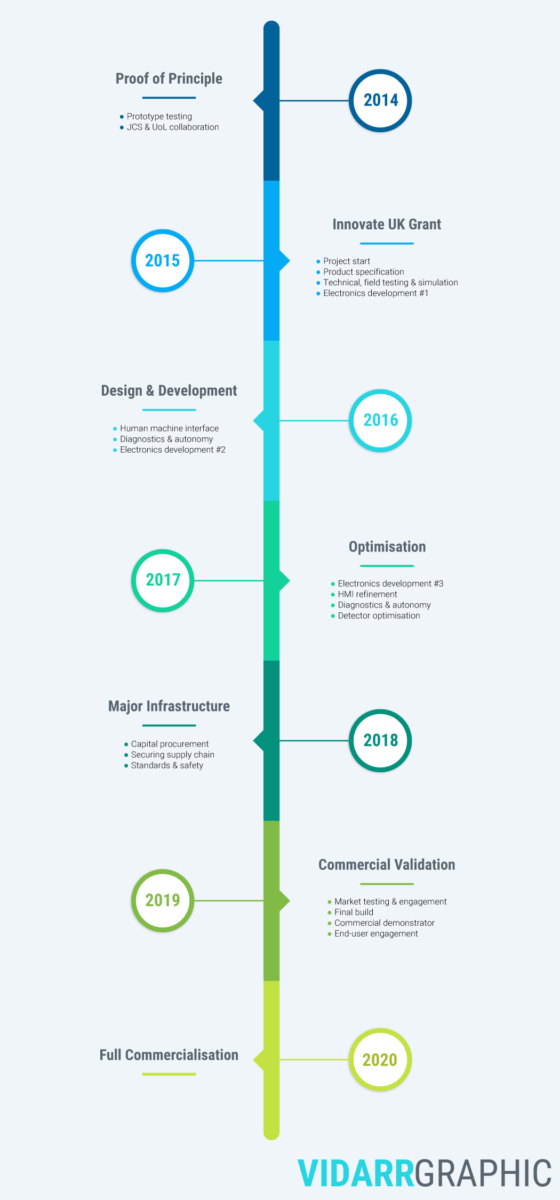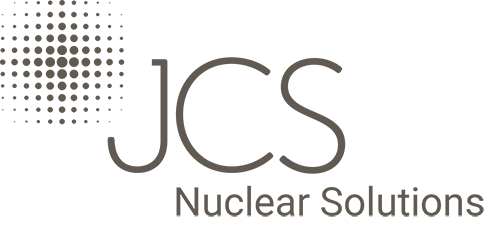Reactor Monitoring
Near Field Reactor Monitoring - Project VIDARR
VIDARR is an Innovate UK supported project, bringing together the University of Liverpool and JCS Ltd in collaboration in response to the UK Energy Catalyst call for technologies.
- Real-time directional assay of a reactor core
- Plutonium accounting
Introduction
Ground-breaking new technology, based on antineutrino detection in particle physics research, will revolutionise the monitoring of nuclear reactors. There has been a marked lack of detector technology that is able to easily and precisely monitor the activity of the fissile process in the nuclear reactor core. This technology will save the nuclear energy sector a potential $350m/year in reduced inspection costs with additional benefits in improved bulk fuel accounting – simulation & validation – via the opportunity to decrease operational error budgets. It will lead to improved efficiency (at the percent level) whilst also fulfilling the safeguards requirements set out by the IAEA and greater confidence in the accountancy of fissile material at the point of production. This project is already supported by the ONR, the NDA, the DECC through access to the Magnox Ltd, Wylfa NPP and the UK Safeguards Support Programme to the IAEA (UKSP). The project output will be a proven prototype to monitor reactor efficiency and safeguard fissile materials that the industrial partner, JCS Ltd, will develop into a commercial product and rapidly take to market.
Project Timeline


"Verification Instrument for Direct Assay of Nuclear Reactors at Range"
The Project
In partnership with SME John Caunt Scientific Ltd, the University of Liverpool has developed a robust and inexpensive antineutrino detector based on state-of-the-art technology. The detector already meets IAEA requirements for field deployment, is non-intrusive to reactor systems, requires only a power supply and data connection, operates at 60 meters from the core, and is located above ground. Essentially it can operate for months without human intervention, outside the reactor building, at low maintenance and overhead.
Developed for the T2K neutrino detection experiment in Japan, the detector is composed of a plastic scintillator array with sensors and is housed within an environmentally stable freight container. The incorporation of a novel, integrated cosmic ray veto system allows it to operate efficiently above ground (a major limitation of the other research systems). The system has recently completed successful tests at Wylfa nuclear power station in the UK.
The detector addresses the three major challenges for nuclear power:
- Improving safeguards to prevent nuclear proliferation
- Improving value extracted from fuel
- Decreasing the generation of nuclear waste
The detector will observe the bulk burn-up of fuel and provide accountancy on the fissile materials within reactor cores. This ‘real time’ information will allow more efficient use of fuel through direct, continuous knowledge of core burn-up and isotope proportions, whilst verifying Pu burn-up.
The detector will also improve reactor simulations. Advances in high performance computing, particularly parallel computing, are allowing simulations to move from bulk models of cores to finite element, more scientific models with higher resolution simulations. Data from the device is being folded in to the simulations providing validation to the codes and further enhancements to efficiency beyond that provided solely by the detector. Continual comparison between simulation and data will provide both a useful operational accountancy and safeguards tool.
In non-weapons states which adhere to the Non-Proliferation Treaty (NPT), IAEA safeguards procedures are more stringent, more frequent and thus more costly. The detector will enable reductions in numbers of inspections and reduced numbers / time of shutdowns for inspections. The device could provide additional non-proliferation assurances in regions where this is a significant issue. The remote nature of the device also means that no access to commercially or politically sensitive areas of a site is needed.

The Team

JCS (John Caunt Scientific Ltd) has been providing world-class nuclear radiation sensing and shielding solutions since 1975, with considerable experience innovating to meet customer-driven requirements. A dynamic associate and partnership business model underpins this approach. Previous projects include designing neutron/gamma measurement instrumentation for AWE, MoD, academic research projects for STFC and universities, and recently combining a team for a specific safeguards project at the IAEA.

The Liverpool University Particle Physics Group is one of the most active in the UK. Its programme includes working at the energy and precision frontiers of physics and in studying the properties of quarks and neutrinos. We know that there must be new undiscovered physics to explain phenomena such as the excess of matter over antimatter and both dark matter and dark energy. The group’s research focused on the discovery the nature of this new physics through a range of exciting experiments. This is made possible through the development of new technologies which also have direct impact on society as a whole. As a team of almost 90 researchers including theorists, programmers, engineers, technicians and students we are a leading centre for the study of the fundamental properties of the universe.

VIDARR is an Innovate UK supported project, bringing together the University of Liverpool and JCS Ltd in collaboration in response to the UK Energy Catalyst call for technologies.

